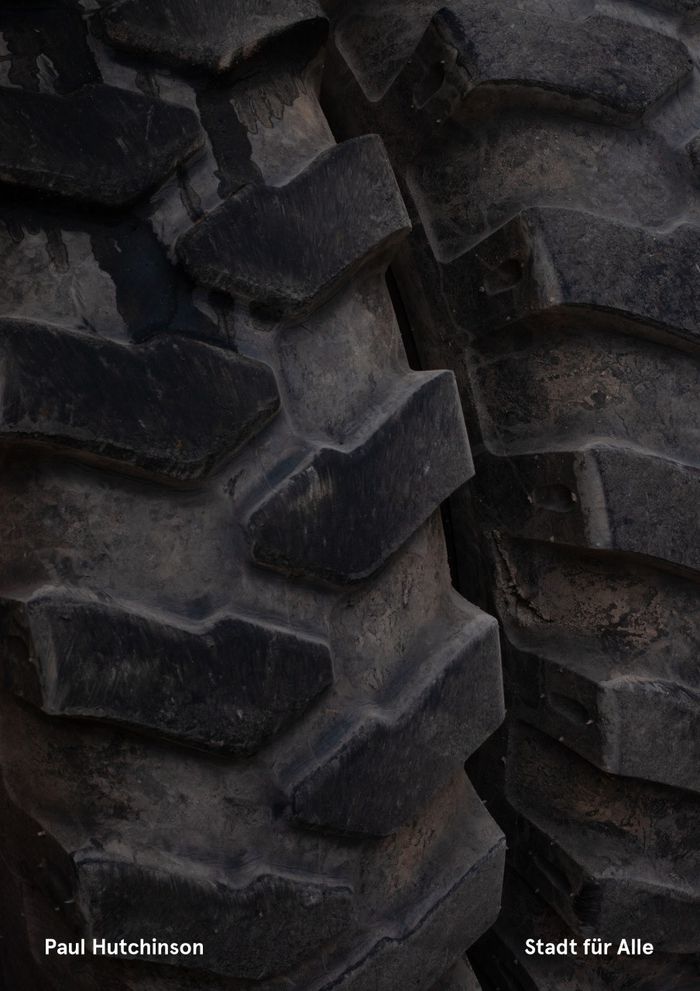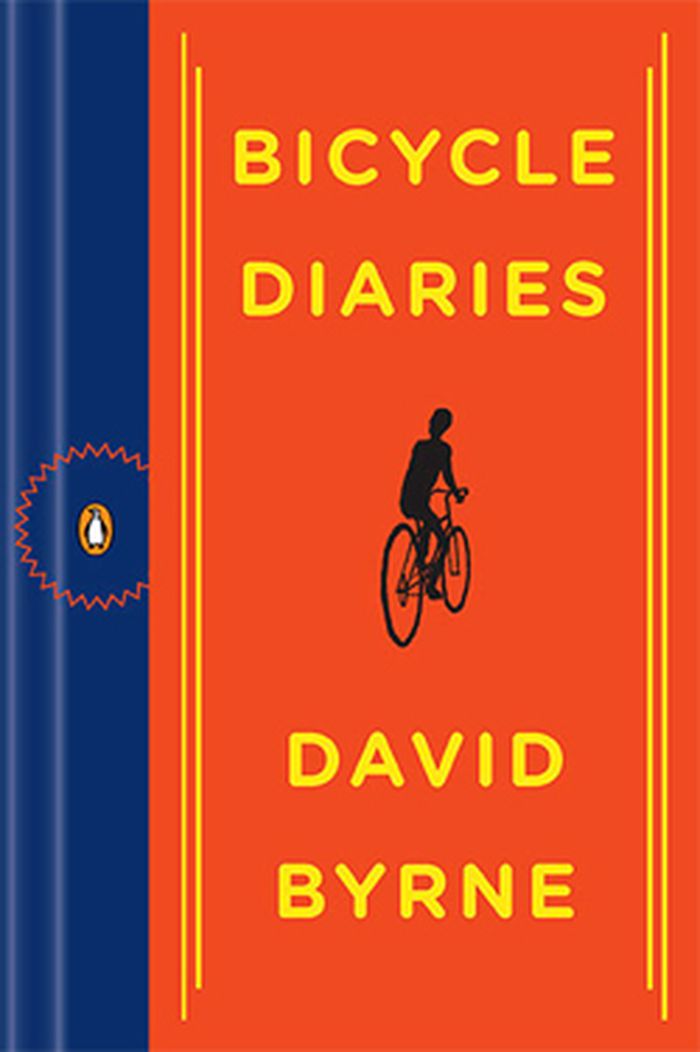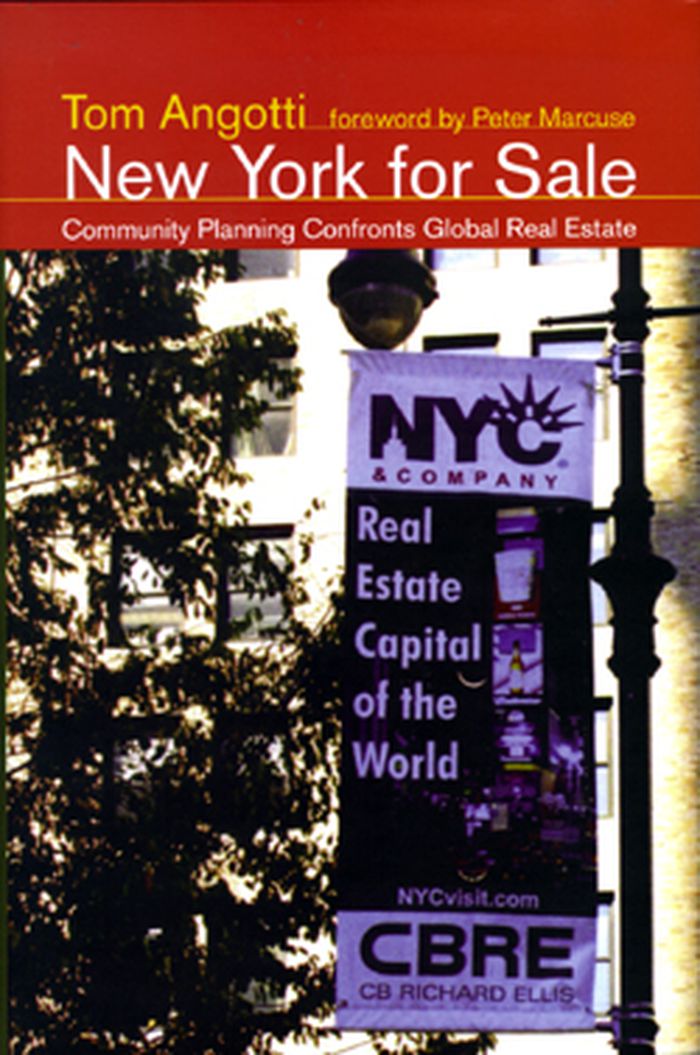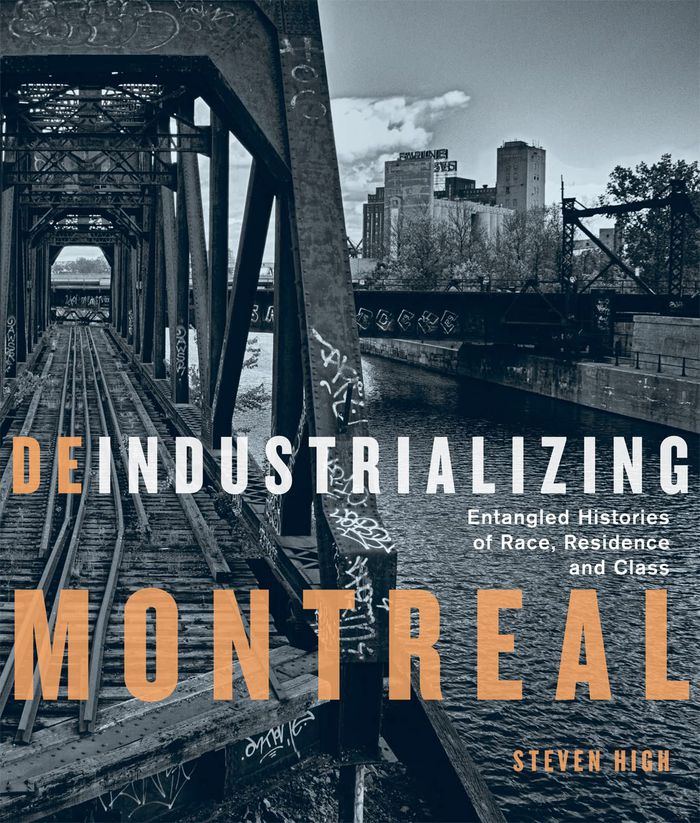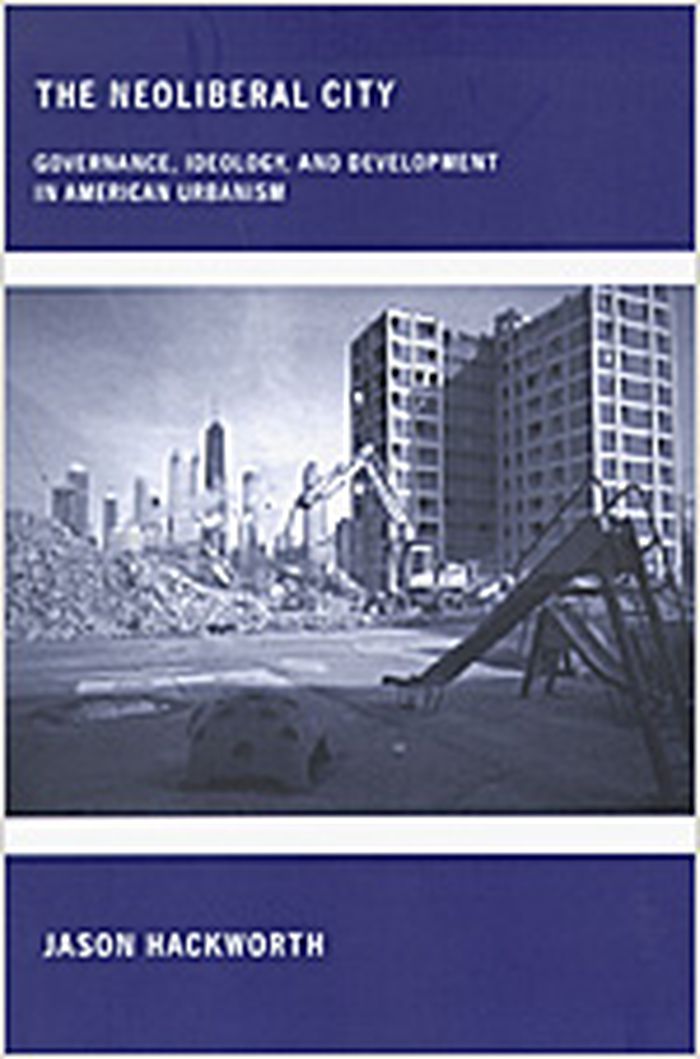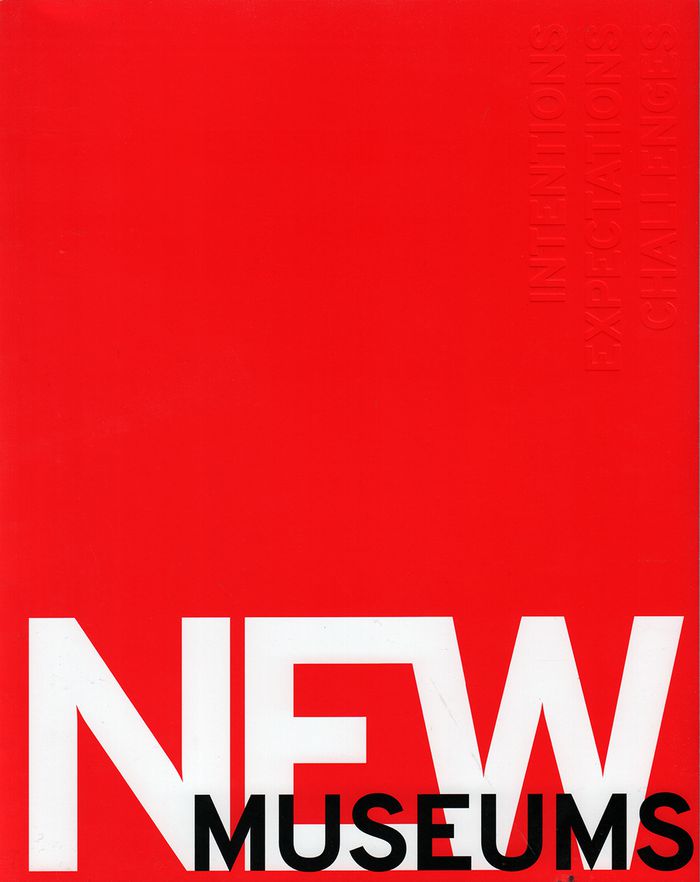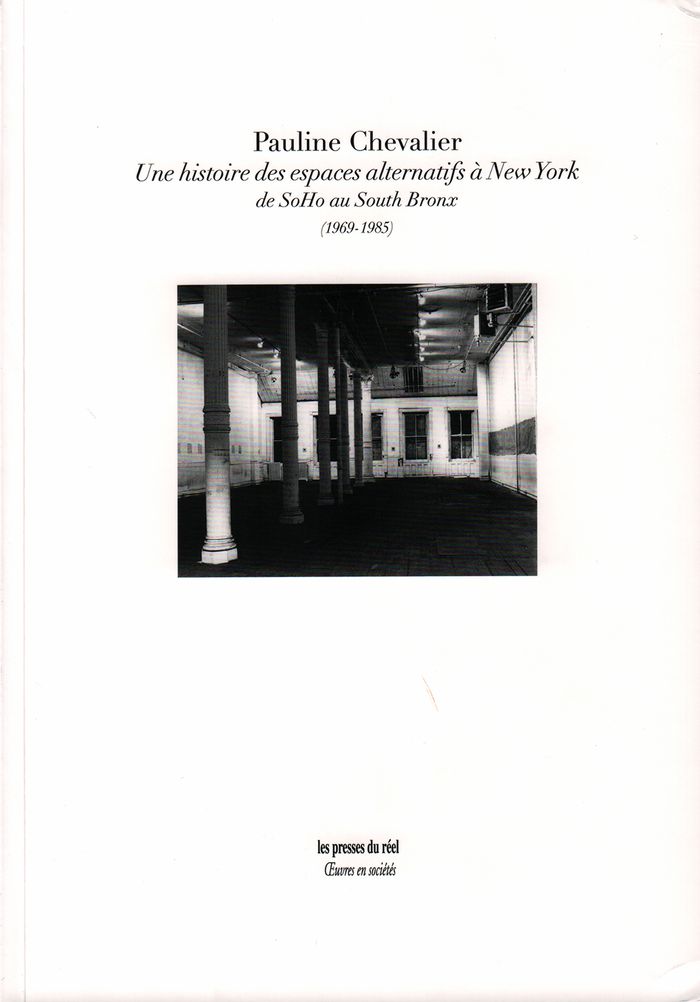$60.00
(disponible en magasin)
Résumé:
Paul Hutchinson’s work (b. Berlin, 1987; lives and works in Berlin) conveys an intimate and unvarnished perspective, rendering the imperfections, incidental details, and human facets of urban culture. Fleeting moments and encounters often act as a base for his critical photographic practice. The central protagonists in his most recent project, titled Stadt für Alle(...)
Paul Hutchinson: Stadt fur alle
Actions:
Prix:
$60.00
(disponible en magasin)
Résumé:
Paul Hutchinson’s work (b. Berlin, 1987; lives and works in Berlin) conveys an intimate and unvarnished perspective, rendering the imperfections, incidental details, and human facets of urban culture. Fleeting moments and encounters often act as a base for his critical photographic practice. The central protagonists in his most recent project, titled Stadt für Alle (transl. City for All), are countless cranes, excavators, and construction signs. They are the tools that power the remaking of any city’s urban fabric – here Berlin mostly sets the example. Building pits constitute the foundation for farewells and new beginnings. Advertising banners for luxury developments vie against protest placards hanging limply on the façades of older buildings. The artist has compiled a pictorial atlas that prompts reflections on the transformation of the city and thereby gives form to the advancing gentrification, the constant feeling of threat and the increasing loss of inner-city street culture. Hutchinson’s writing complements the deft visual analysis of these processes: "The way you look at me, smiling while I’m losing my vision" is one such observation that, in conjunction with his images, opens up a space for interpretation and a probing inquiry into what urban life will mean in the future.
Monographies photo
$19.00
(disponible sur commande)
Résumé:
From a renowned musician and visual artist comes "Bicycle Diaries" - part travelogue, part journal, part photo album - a behind-the-handlebars celebration of seeing the world from the seat of a bike. Byrne is fascinated by cities, especially as visited on a trusty fold-up bicycle, and in these random musings over many years while cycling through such places as Sydney,(...)
David Byrne : bicycle diaries
Actions:
Prix:
$19.00
(disponible sur commande)
Résumé:
From a renowned musician and visual artist comes "Bicycle Diaries" - part travelogue, part journal, part photo album - a behind-the-handlebars celebration of seeing the world from the seat of a bike. Byrne is fascinated by cities, especially as visited on a trusty fold-up bicycle, and in these random musings over many years while cycling through such places as Sydney, Australia; Manila, Philippines; San Francisco; or his home of New York, the former Talking Head, artist and author (True Stories) offers his frank views on urban planning, art and postmodern civilization in general. For each city, he focuses on its germane issues, such as the still troublingly clear-cut class system in London, notions of justice and human migration that spring to mind while visiting the Stasi Museum in Berlin, religious iconography in Istanbul, gentrification in Buenos Aires and Imelda Marcos's legacy in Manila. He notes that the condition of the roads reveals much about a city, like the impossibly civilized, pleasant pathways designed just for bikes in Berlin versus the fractured car-mad system of highways in some American cities, giving way to an eerie post apocalyptic landscape (e.g., Detroit). Candid and self-deprecating, Byrne offers a work that is as engaging as it is cerebral and informative
Théorie de l’urbanisme
$24.95
(disponible sur commande)
Résumé:
In New York for Sale, Tom Angotti tells some of the stories of community planning in New York City: how activists moved beyond simple protests and began to formulate community plans to protect neighborhoods against urban renewal, real estate mega-projects, gentrification, and environmental hazards. Angotti, both observer of and longtime participant in New York community(...)
New York for sale: community planning confronts global real estate
Actions:
Prix:
$24.95
(disponible sur commande)
Résumé:
In New York for Sale, Tom Angotti tells some of the stories of community planning in New York City: how activists moved beyond simple protests and began to formulate community plans to protect neighborhoods against urban renewal, real estate mega-projects, gentrification, and environmental hazards. Angotti, both observer of and longtime participant in New York community planning, focuses on the close relationships among community planning, political strategy, and control over land. After describing the political economy of New York City real estate, its close ties to global financial capital, and the roots of community planning in social movements and community organizing, Angotti turns to specifics. He tells of two pioneering plans forged in reaction to urban renewal plans (including the first community plan in the city, the 1961 Cooper Square Alternate Plan—a response to a Robert Moses urban renewal scheme); struggles for environmental justice, including battles over incinerators, sludge, and garbage; plans officially adopted by the city; and plans dominated by powerful real estate interests. Finally, Angotti proposes strategies for progressive, inclusive community planning not only for New York City but for anywhere that neighborhoods want to protect themselves and their land. New York for Sale teaches the empowering lesson that community plans can challenge market-driven development even in global cities with powerful real estate industries.
Théorie de l’urbanisme
$22.50
(disponible en magasin)
Résumé:
A revelatory conversation between two major figures in visual culture. What is a singular object? An idea, a building, a color, a sentiment, a human being. Each in turn comes under scrutiny in this exhilarating dialogue between two of the most interesting thinkers working in philosophy and architecture today. From such singular objects, Jean Baudrillard and Jean Nouvel(...)
Théorie de l’architecture
octobre 2005, Minneapolis, London
Jean Baudrillard and Jean Nouvel : the singular objects of architecture
Actions:
Prix:
$22.50
(disponible en magasin)
Résumé:
A revelatory conversation between two major figures in visual culture. What is a singular object? An idea, a building, a color, a sentiment, a human being. Each in turn comes under scrutiny in this exhilarating dialogue between two of the most interesting thinkers working in philosophy and architecture today. From such singular objects, Jean Baudrillard and Jean Nouvel move on to fundamental problems of politics, identity, and aesthetics as their exchange becomes an imaginative exploration of the possibilities of modern architecture and the future of modern life. Among the topics the two speakers take up are the city of tomorrow and the ideal of transparency, the gentrification of New York City and Frank Gehry's Guggenheim museum in Bilbao. As Nouvel prompts Baudrillard to reflect on some of his signature concepts (the virtual, transparency, fatal strategies, oblivion, and seduction, among others), the confrontation between such philosophical concerns and the specificity of architecture gives rise to novel and striking formulations-and a new way of establishing and understanding the connections between the practitioner and the philosopher, the object and the idea. This wide-ranging conversation builds a bridge between the fields of architecture and philosophy. At the same time it offers readers an intimate view of the meeting of objects and ideas in which the imagined, constructed, and inhabited environment is endlessly changing, forever evolving.
Théorie de l’architecture
$49.95
(disponible sur commande)
Résumé:
Point Saint-Charles, a historically white working-class neighbourhood with a strong Irish and French presence, and Little Burgundy, a multiracial neighbourhood that is home to the city’s English-speaking Black community, face each other across Montreal’s Lachine Canal, once an artery around which work and industry in Montreal were clustered and by which these two(...)
Deindustrializing Montreal: entangled histories of race, residence, and class
Actions:
Prix:
$49.95
(disponible sur commande)
Résumé:
Point Saint-Charles, a historically white working-class neighbourhood with a strong Irish and French presence, and Little Burgundy, a multiracial neighbourhood that is home to the city’s English-speaking Black community, face each other across Montreal’s Lachine Canal, once an artery around which work and industry in Montreal were clustered and by which these two communities were formed and divided. ''Deindustrializing Montreal'' challenges the deepening divergence of class and race analysis by recognizing the intimate relationship between capitalism, class struggles, and racial inequality. Fundamentally, deindustrialization is a process of physical and social ruination as well as part of a wider political project that leaves working-class communities impoverished and demoralized. The structural violence of capitalism occurs gradually and out of sight, but it doesn’t play out the same for everyone. Point Saint-Charles was left to rot until it was revalorized by gentrification, whereas Little Burgundy was torn apart by urban renewal and highway construction. This historical divergence had profound consequences in how urban change has been experienced, understood, and remembered. Drawing extensive interviews, a massive and varied archive of imagery, and original photography by David Lewis into a complex chorus, Steven High brings these communities to life, tracing their history from their earliest years to their decline and their current reality. He extends the analysis of deindustrialization, often focused on single-industry towns, to cities that have seemingly made the post-industrial transition.
Architecture de Montréal
$28.95
(disponible sur commande)
Résumé:
The shift in the ideological winds toward a "free-market" economy has brought profound effects in urban areas. "The neoliberal city" presents an overview of the effect of these changes on today's cities. The term "neoliberalism" was originally used in reference to a set of practices that first-world institutions like the IMF and World Bank impose on third-world countries(...)
The neoliberal city : governance, ideology, and development in american urbanism
Actions:
Prix:
$28.95
(disponible sur commande)
Résumé:
The shift in the ideological winds toward a "free-market" economy has brought profound effects in urban areas. "The neoliberal city" presents an overview of the effect of these changes on today's cities. The term "neoliberalism" was originally used in reference to a set of practices that first-world institutions like the IMF and World Bank impose on third-world countries and cities. The support of unimpeded trade and individual freedoms and the discouragement of state regulation and social spending are the putative centerpieces of this vision. More and more, though, people have come to recognize that first-world cities are undergoing the same processes. In "The neoliberal city", Jason Hackworth argues that neoliberal policies are in fact having a profound effect on the nature and direction of urbanization in the United States and other wealthy countries, and that much can be learned from studying its effect. He explores the impact that neoliberalism has had on three aspects of urbanization in the United States: governance, urban form, and social movements. The American inner city is seen as a crucial battle zone for the wider neoliberal transition primarily because it embodies neoliberalism's antithesis, Keynesian egalitarian liberalism. Focusing on issues such as gentrification in New York City; public-housing policy in New York, Chicago, and Seattle; downtown redevelopment in Phoenix; and urban-landscape change in New Brunswick, N.J., Hackworth shows us how material and symbolic changes to institutions, neighborhoods, and entire urban regions can be traced in part to the rise of neoliberalism.
Théorie de l’urbanisme
$70.50
(disponible sur commande)
Résumé:
What is the role of the museum in society today? In this time of fundamental economic and social change, should museums be safe civic spaces or open a floor for challenge and change? Can museums contribute to the economic development of communities? If so, how best to guard against the effects of gentrification so that they do not further limit opportunity for low-income(...)
New museums: intentions, expectations, challenges
Actions:
Prix:
$70.50
(disponible sur commande)
Résumé:
What is the role of the museum in society today? In this time of fundamental economic and social change, should museums be safe civic spaces or open a floor for challenge and change? Can museums contribute to the economic development of communities? If so, how best to guard against the effects of gentrification so that they do not further limit opportunity for low-income residents? How should museums respond to concerns about environmental sustainability? These are just a few of the questions museum professionals, planners, and architects must carefully consider when developing plans and choosing a location for a new museum. "New museums" explores these questions by talking to the people behind twenty different museums on six continents, both realized projects and speculative design proposals. Among the museums discussed in the book are the Smithsonian Institute’s National Museum of African American History and Culture in Washington, DC, by Adjaye Associates; the Guggenheim Helsinki by Moreau Kusunoki Architectes; the Comic and Animation Museum in Hangzhou by MVRDV; the Munch Museum in Oslo by Estudio Herreros, the Zeitz Museum of Contemporary Art Africa in Cape Town by Heatherwick Studio; the Long Museum West Bund in Shanghai by Atelier Deshaus; and the recent extension of the Art Gallery of New South Wales in Sydney by SANAA. With more than 250 color illustrations and contributions by leading museum and architecture experts, the book sheds light on current trends and the state-of-the-art technological advances in architecture, while also providing insight into the careful thought and decision processes that go into the development of new museums.
Muséologie
$48.95
(disponible sur commande)
Résumé:
112 Greene Street, The Kitchen, Artists Space, The Clocktower, P.S.1, Franklin Furnace, ou Fashion Moda : ces lieux nés durant la décennie 1970, et parfois toujours en activité, ont laissé une empreinte durable sur la scène artistique new-yorkaise. « Espaces alternatifs », d'abord installés dans ces quartiers industriels du sud de Manhattan qui deviendront SoHo et(...)
Une histoire des espaces alternatifs à New York: de SoHo au South Bronx,1969-1985
Actions:
Prix:
$48.95
(disponible sur commande)
Résumé:
112 Greene Street, The Kitchen, Artists Space, The Clocktower, P.S.1, Franklin Furnace, ou Fashion Moda : ces lieux nés durant la décennie 1970, et parfois toujours en activité, ont laissé une empreinte durable sur la scène artistique new-yorkaise. « Espaces alternatifs », d'abord installés dans ces quartiers industriels du sud de Manhattan qui deviendront SoHo et TriBeCa, puis dans l'East Village, le Queens, Brooklyn, ou encore le sud du Bronx, ces lieux d'exposition, de création et de sociabilité établis en marge des institutions muséales et des galeries commerciales ont favorisé l'épanouissement de nouvelles pratiques : art processuel, danse postmoderne, art vidéo, performance. C'est une enquête historique et un parcours géographique que propose l'ouvrage, mettant en lumière l'articulation entre ces pratiques et les phénomènes institutionnels, sociaux, économiques et urbains dont elles ne peuvent être dissociées. Si les installations dans les espaces bruts du 112 Greene Street ou l'exposition inaugurale de P.S.1 révèlent un engouement pour le matériau urbain, c'est aussi la place des artistes dans la ville de New York qui est alors constamment interrogée, depuis la légalisation des premiers lofts jusqu'aux critiques virulentes de la gentrification qui émanent de la communauté artistique elle-même. Alors qu'au début des années 1970 ces lieux alternatifs profitent d'un contexte économique favorable et du soutien d'une nouvelle politique culturelle fédérale et locale, le milieu des années 1980 sonne le glas d'un mouvement. « The Fun is gone » arbore la Fun Gallery à sa fermeture dans l'East Village en 1985. La scène alternative s'essouffle sous la présidence Reagan, non sans avoir nourri sa propre histoire et contribué à la constitution d'une mythologie et d'un héritage dont l'ambivalence persiste aujourd'hui.
Théorie de l’art
Loving the High Line
$20.00
(disponible sur commande)
Résumé:
As an elevated rail line, designed to lift freight trains serving the Hudson River docks above street level circulation, The High Line was originally constructed as material infrastructure for an industrial city. It was closed in 1960s and stood abandoned for the next forty years. In this time organic debris accumulated and decayed, and seeds landed on the newly forming(...)
Loving the High Line
Actions:
Prix:
$20.00
(disponible sur commande)
Résumé:
As an elevated rail line, designed to lift freight trains serving the Hudson River docks above street level circulation, The High Line was originally constructed as material infrastructure for an industrial city. It was closed in 1960s and stood abandoned for the next forty years. In this time organic debris accumulated and decayed, and seeds landed on the newly forming soil creating a meadow on the derelict railbed. This microcosmic biome then also became a heterotopic, other space, in the social ecology of the city as an efflorescence of new art forms and underground subcultures flourished in the evacuated post-industrial spaces of Chelsea. These processes would unfold as New York City was being transformed into a global center in an emerging political-economy defined by the integration of finance capital with media and information industries. In this, marginal spaces of the kind that developed in Chelsea, and the cultures that create them, became important sources of new aesthetic and cultural innovation, that offer an exploitable social ground from which to extract semiotic value. As the Bloomberg administration gave shape to this new regime, a project was initiated to convert the High Line into a publicly accessible, linear park. This would be realized through a convoluted process in which the manifold tensions and contradictions of the postmodern city would be dramatically played out and the disjunctions between ideal image regimes and the reality of the material substrates that support them would be brought to light, if only to be newly obscured. The High Line urban park has been both heralded as a definitive model for new urban development, and denounced as a driver, or at least a morbid symptom, of devastating gentrification, and the destructive financialization of urban space. This text, originally published in 2015 as part of the Deconstructing the High Line anthology, edited by Mark Linder and Brian Rosa, tracks a collection of interconnected historical treads that converge in the reconstruction of the High Line, and situates the project within architectural discourse and practice, and social and material conditions with which it struggles to engage.
Paysages urbains
